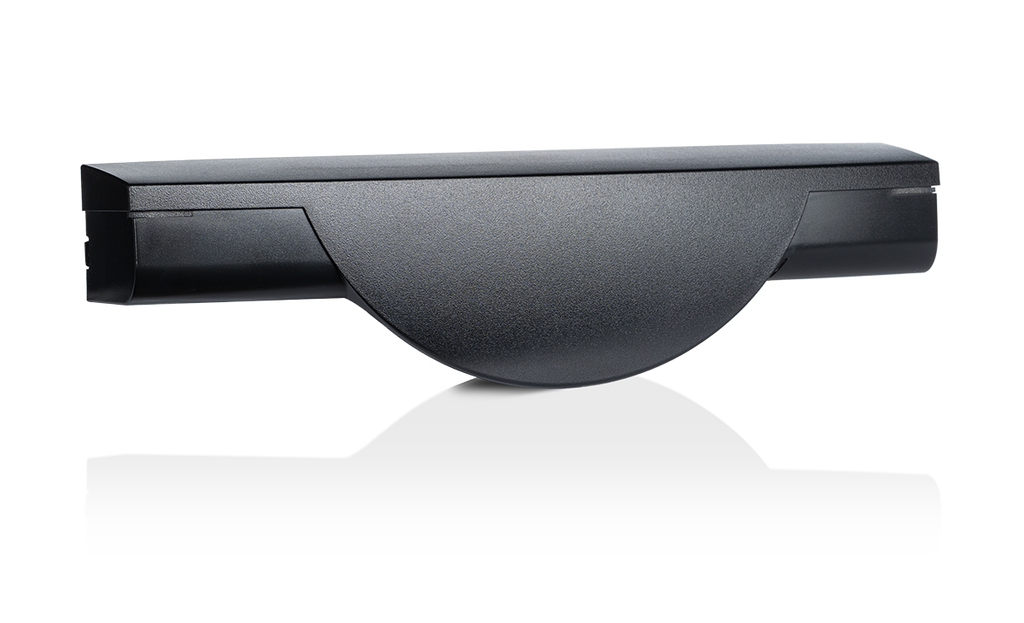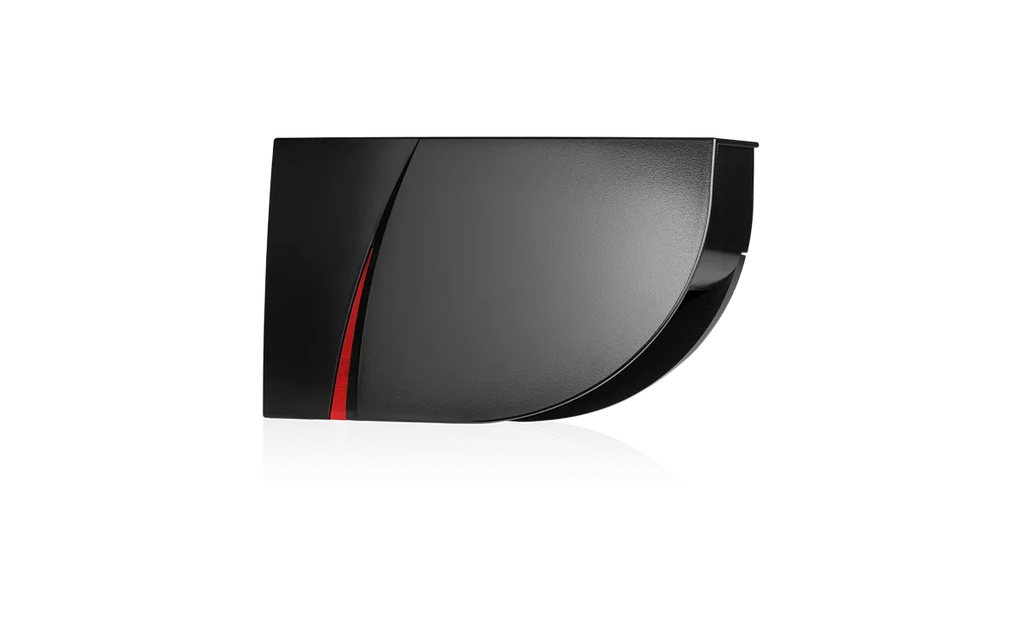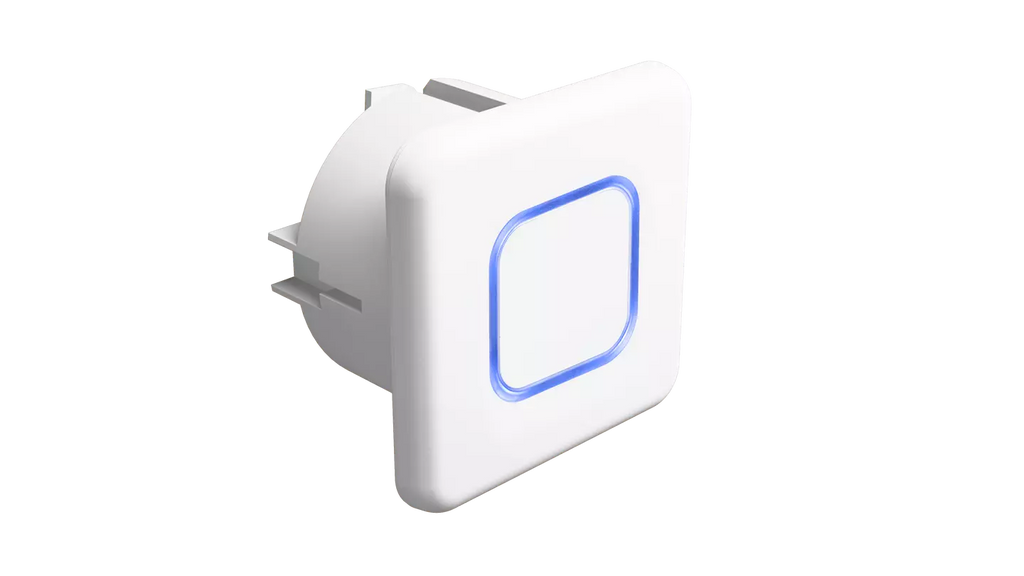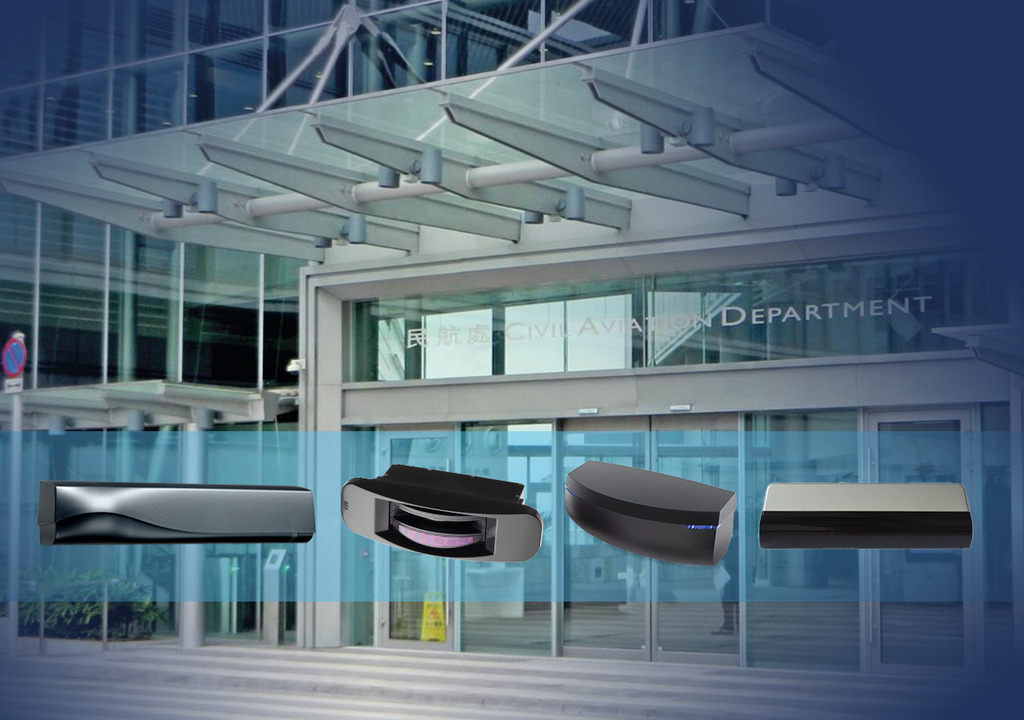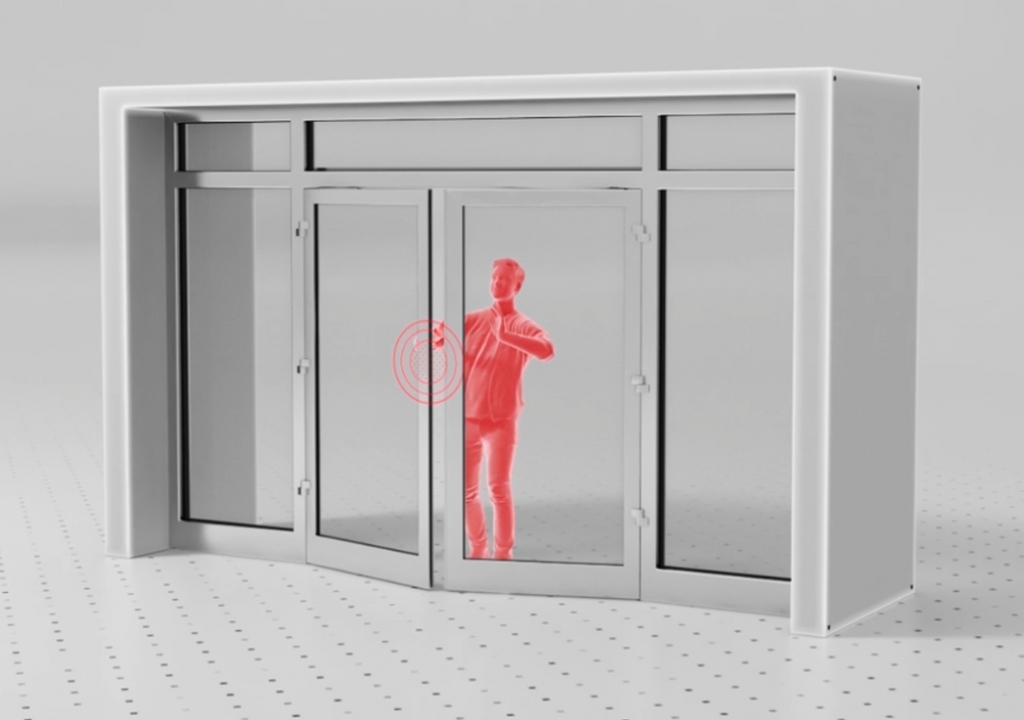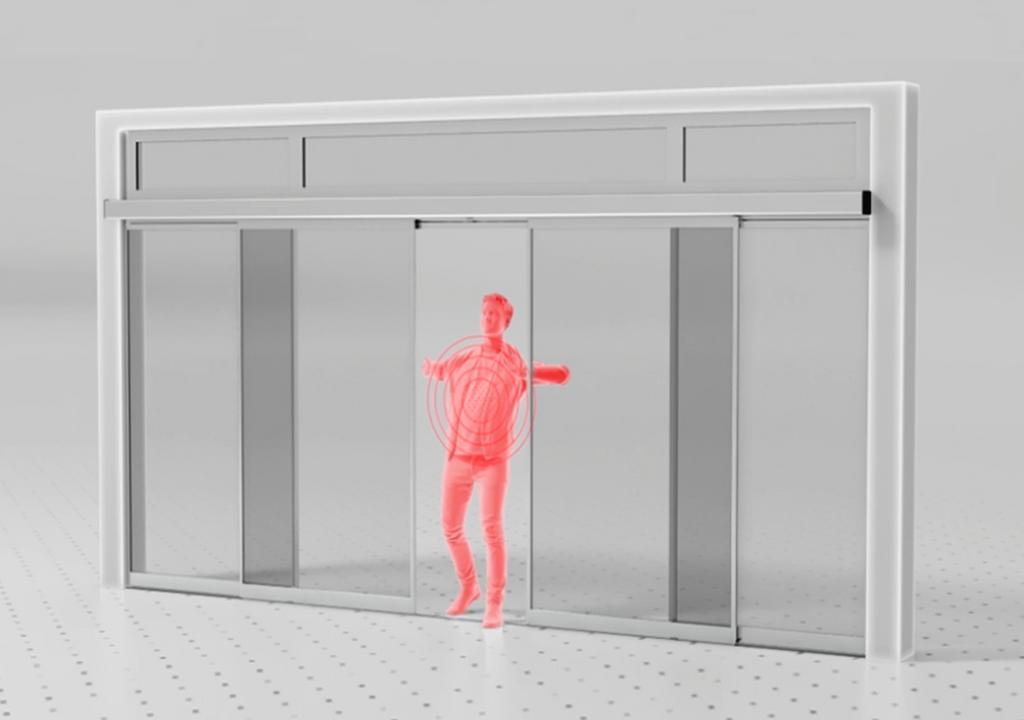(Video source: websites)
The safety of elderly residents is of utmost importance in nursing centers, which are environments filled with warmth and care. Recently, a viral video depicting an automatic door accident—where an older adult was injured due to insufficient pedestrian protection—has sparked widespread concern. This incident raises a critical question: How can we effectively enhance the safety of automatic doors in nursing homes?
The Vital Importance of Automatic Door Safety in Nursing Centers
The residents of nursing centers primarily consist of elderly residents with limited mobility. They may walk with difficulty, rely on wheelchairs or walkers, or require assistance from caregivers to navigate their surroundings. Therefore, in addition to stairwell evacuation doors and internal staff entrances, most access points in nursing homes are equipped with automatic doors to facilitate the daily movement of both elderly residents and staff.
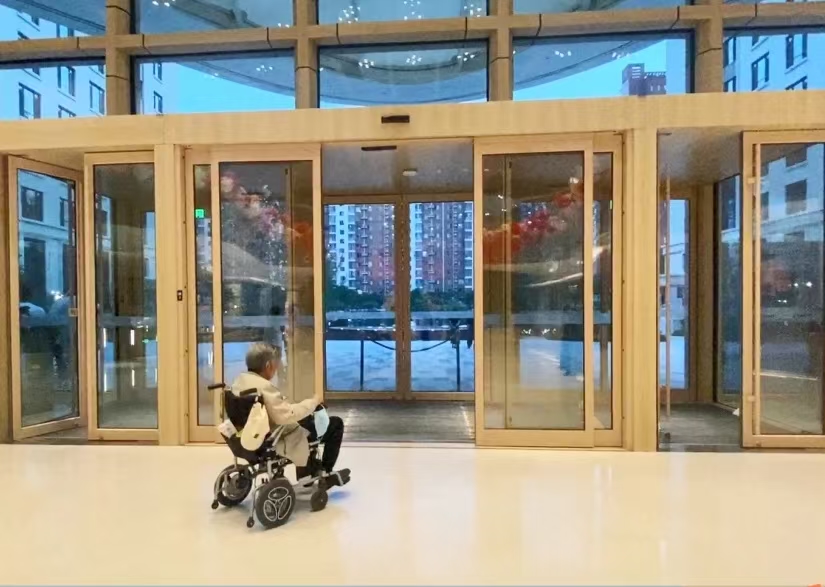
However, the safety of automatic doors in nursing centers is often disregarded. If an automatic door is not equipped with suitable safety sensors or lacks them altogether, it can easily lead to accidents such as pinching or falls when elderly residents pass through, especially for those using wheelchairs or walkers.
As seen in the accident mentioned earlier, the root cause was the improper selection of door sensors, which exhibited unstable performance. Therefore, selection of the right safety sensors is crucial for ensuring the safety of automatic doors in nursing centers. This is not only a requirement for the normal operation of the facility but also a responsibility towards the safety and quality of life of elderly residents.
Safety Hazards from the Improper Selection of Automatic Door Sensors
Many nursing centers currently still use traditional photo beam sensors for their automatic doors. These sensors detect objects by emitting and receiving infrared light. However, in practical applications, they pose numerous safety hazards. For instance, when wheelchairs or walkers are positioned lower to the ground, it may not be detected in time by the photo beam sensors. This can lead to the door closing and pinching the wheelchair or walker, resulting in accidental injuries to the elderly.
Photo Beam vs Infrared Sensor
Moreover, under intense light conditions, photo beam sensors are prone to misjudgment, which can cause automatic doors to fail to respond appropriately. For elderly people who move and react slowly, this presents a significant safety hazard and contributes to a high accident rate involving automatic doors.
From an energy-saving perspective, the frequent false triggers at the main entrances of nursing centers, which connect to the outdoor environments, result in excessive door openings and closings. This results in significant energy loss from air conditioning or heating systems, undermining cost-saving efforts within nursing centers.
BEA’s High-Tech Sensors: Equipping Nursing Center Automatic Doors with “Eye of Wisdom”
Given the current safety concerns, nursing centers urgently need reliable sensor solutions. With 60 years of dedication to sensor research and manufacturing, BEA Sensors offers a comprehensive range of safety sensors. Equipped with advanced laser or infrared technology, these sensors effectively detect objects in front of the door. Their reliable and dependable performance ensures that automatic doors stop closing and reopen when a person or object is detected, effectively mitigating safety hazards and enhancing both the safety and operational efficiency of nursing centers.
Why Do Top Nursing Institutions Equip Their Automatic Doors with BEA Sensors?
- High Sensitivity Detection for Safe Passage: BEA sensors provide comprehensive protection for automatic doors, ensuring that mobility aids such as wheelchairs and walkers are not overlooked, thus offering all-around safety for elderly individuals.
- High Immunity to Environmental Interference and Stable Operation: Even in intense light or complex environments, BEA sensors maintain stable detection performance, preventing misjudgments and ensuring that automatic doors operate safely and reliably at all times.
- Touchless Activation of Automatic Doors to Protect Elderly Health: Utilizing BEA sensors to achieve touchless activation of automatic doors, minimizing hand contact to reduce the spread of bacteria and viruses effectively. This creates a safe and hygienic environment for elderly residents in nursing homes, thoughtfully safeguarding their health.
- Easy Installation and Maintenance: BEA sensors are easy to install and have low maintenance costs, making them ideal for nursing homes that require long-term stable operation. This allows nursing center operators to save time and reduce expenses.
Automatic Door Safety Sensor Solutions in Nursing Centers
1. Safety Sensors for Automatic Sliding Doors
The IXIO series sensors, a global bestseller since 2012, combine microwave and infrared technology for door opening and safety protection. They are widely used in the automatic sliding doors of nursing centers, hospitals, residential entrances, airports, shopping centers, and other locations. Their unidirectional opening function also helps buildings save energy and aligns with the PL d performance level defined by ISO 13849, with European TUV certification, ensuring outstanding performance and stability.
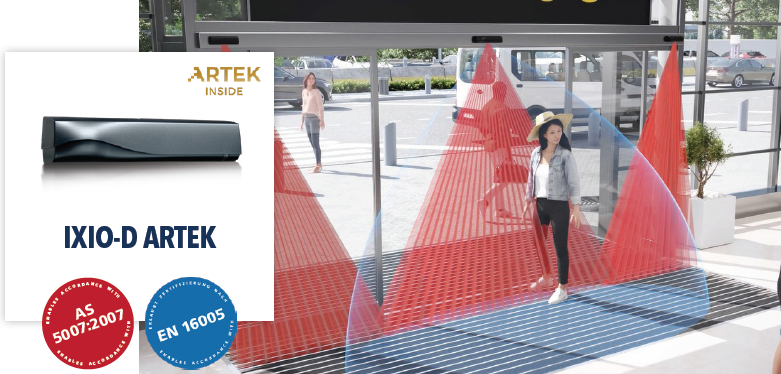
Application Example of IXIO
Additionally, BEA’s latest Orascan all-in-one sliding door safety sensor, is a high-end sensor suitable for nursing centers. It utilizes Microwave (Artek Inside) and Laser (ToF) technology to provide 100% protection coverage of the entire sliding door area, elevating passage safety to a new level. The Orascan also allows for the configuration of up to four virtual buttons for touchless, on-demand automatic door activation.
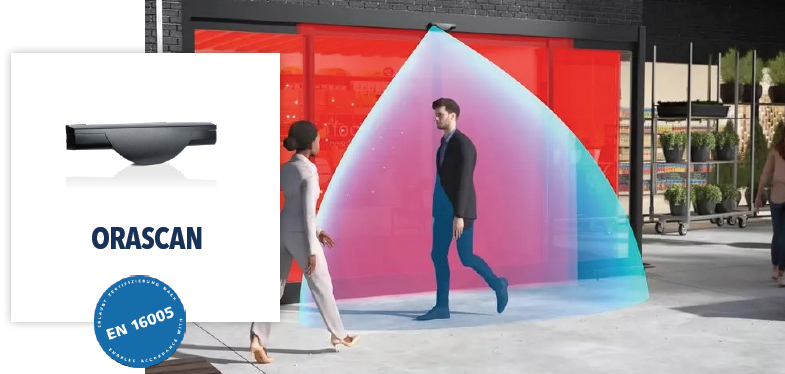
Application of Orascan
Additionally, the LZR®-FLATSCAN SL automatic sliding door sensor, which uses Laser (ToF) technology, provides comprehensive high-precision safety protection for automatic sliding doors with 400 laser points covering a large area. Furthermore, users can flexibly set up two virtual buttons for touchless activations of the automatic doors, helping to reduce the spread of bacteria. This makes it particularly suitable for environments such as nursing centers and hospitals with stringent hygiene requirements.
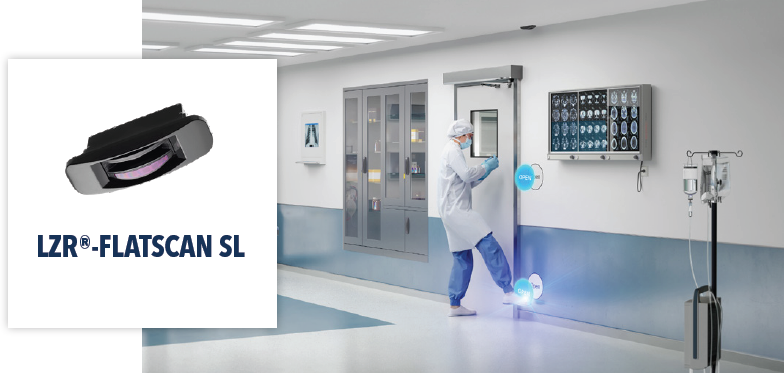
FLATSCAN SL Hospital Application
2. Safety Sensors for Automatic Swing Doors
The LZR®-FLATSCAN SW swing door safety sensor, based on Laser (ToF) technology, emits 170 measurable laser points to provide safety protection for the door leaf and edges. It also features anti-pinch protection in the door hinge area, and the sensor’s operation is not affected by weather or ground conditions. It is widely used in automatic swing doors of nursing centers, hospitals, residential areas, etc.
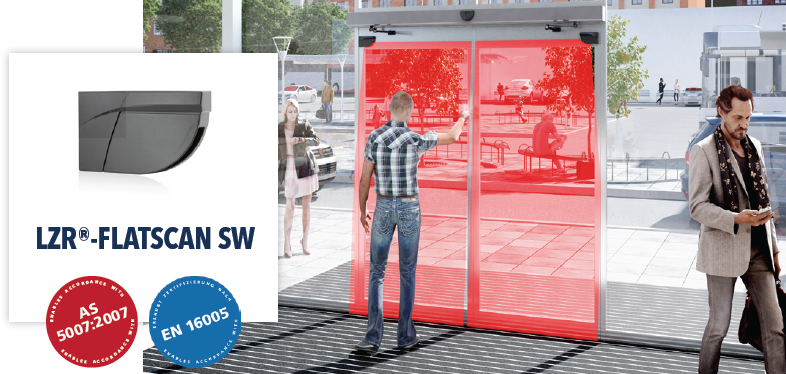
Application Example of FLATSCAN SW
The upgraded LZR®-FLATSCAN 3D SW swing door safety sensor boasts enhanced functionality. It features four layers of laser curtains, ensuring that when someone lingers in the doorway, the door will not make any sudden movements. It protects the door leaf and edges, while also providing anti-pinch protection in the door hinge area. Users can also set up two virtual buttons for touchless activations of automatic swing doors, making it suitable for entrances in nursing centers and residential areas.
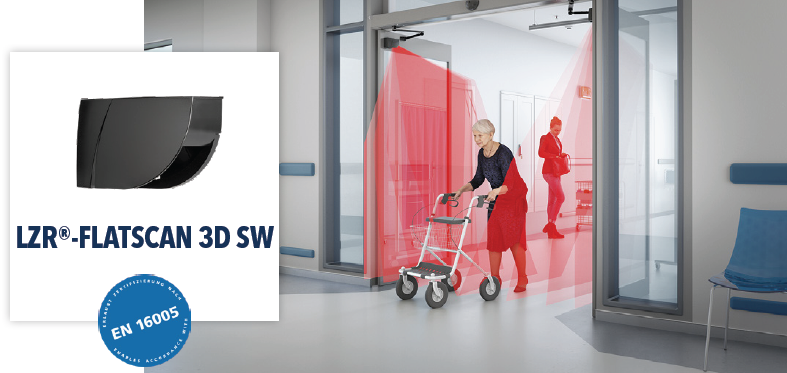
Application of FLATSCAN 3D SW
Touchless Opening Sensors for Automatic Doors in Nursing Centers
In the current global health situation, touchless automatic door opening sensors are gradually becoming standard equipment for automatic doors in public places.
BEA’s Magic Switch Chroma touchless automatic door sensor allows users to open the door with a simple hand wave, helping to reduce the spread of bacteria. It also offers customizable options for multi-color LED lights, icons, and audio signals, making it widely applicable in various environments with high hygiene requirements, such as hospitals, nursing centers, restaurants, hotels, and airports. Additionally, its unique BIOMASTER antimicrobial front cover limits the growth of fungi and microorganisms, significantly reducing the risk of cross-contamination in places like nursing centers.
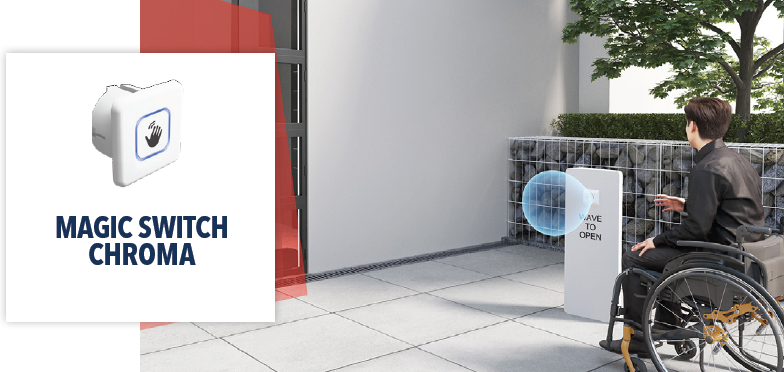
Application Example of Magic Switch Chroma
Successful Case of BEA Sensors in Nursing Centers
Since 2018, a leading domestic chain of high-end nursing institutions in China has integrated BEA safety sensors into its automatic door configuration standards as part of its intelligent, aging-friendly renovation projects. The institution has successfully upgraded and deployed automatic door systems in five branches, including branches in Beijing and Tianjin. These installations utilized over 100 units of IXIO sliding door safety sensors and 150 units of LZR-FLATSCAN SW swing door safety sensors. The reliable operation of these sensors ensures the safe passage of nearly 10,000 individuals daily.
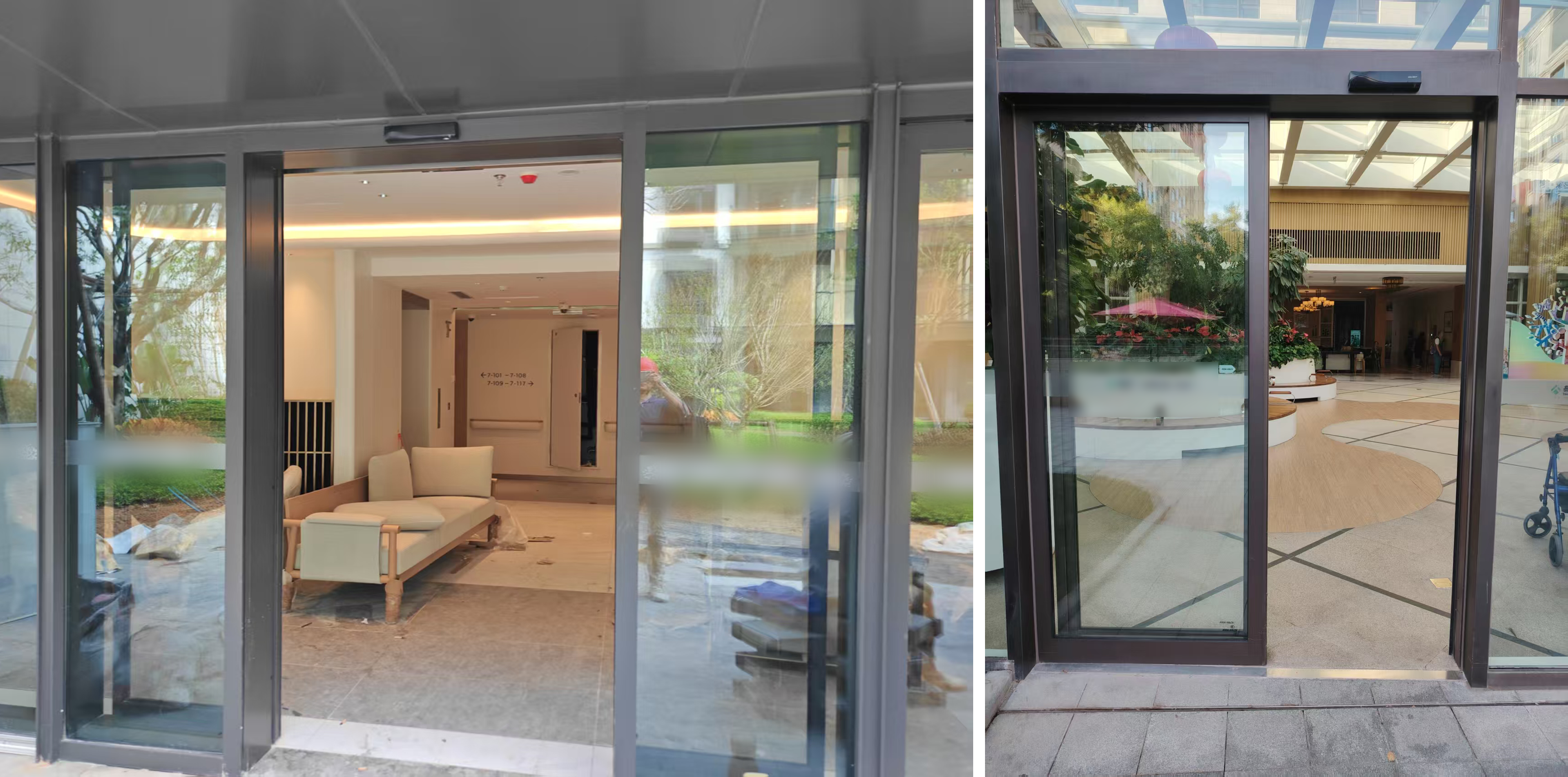
Based on the positive outcomes of the previous projects, this nursing institution will also adopt the same level of safety configuration in its new and renovated projects in 6 other major cities, including Shanghai, to ensure that the automatic door systems in all branches maintain the industry’s leading safety protection level.
The person in charge of the Beijing branch of the nursing institution stated that since installing the BEA’s anti-pinch (safety) protection sensors, the safety and reliability of their automatic doors have significantly improved, with the accident rate dropping to zero.
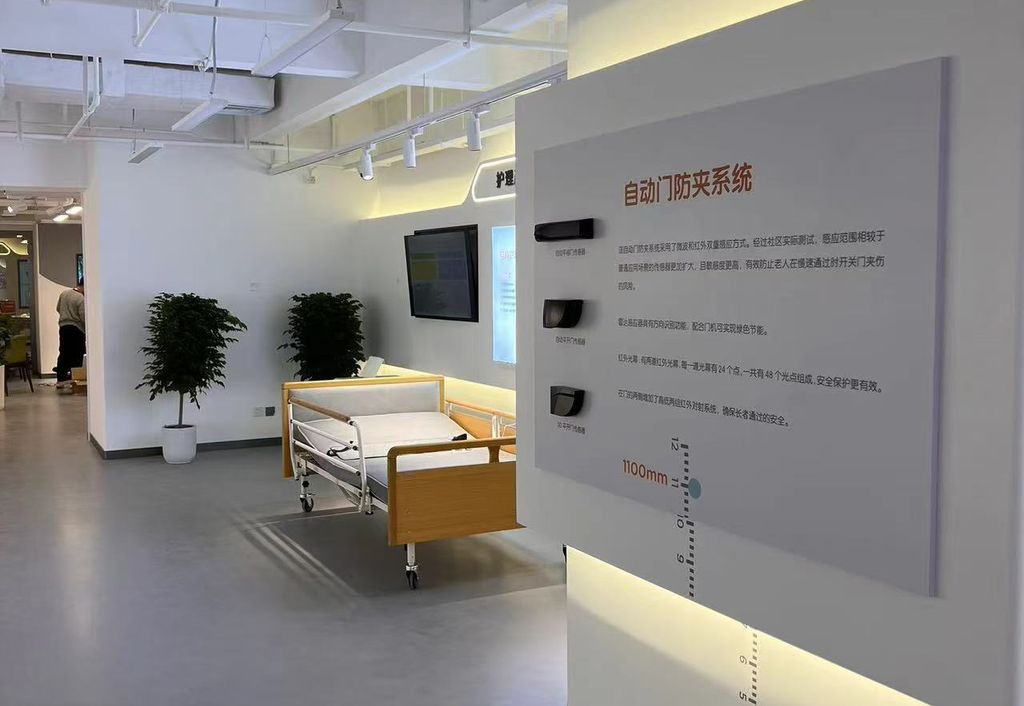
Automatic Door Anti-Pinch(safety) System (Sensor) Configuration Introduction, Domestic High-End Nursing Center in Beijing
The nursing staff in one of the nursing centers have also provided feedback that BEA sensors respond very quickly, even during peak usage times. The automatic doors can swiftly respond, preventing congestion and significantly reducing the safety hazards in the nursing center. The elderly residents of the nursing center have expressed that they feel very secure when passing through the automatic doors daily. Not only do they not have to worry about opening the doors manually, do they have to worry about being pinched or hit by the doors.
The safety of automatic doors in nursing centers and similar environments is no trivial matter, it’s a critical issue that demands immediate attention and must be given high priority. By carefully selecting the right sensors, we can eliminate accidents involving automatic doors, creating a safer, more convenient, and comfortable environment for elderly residents and staff. This is not just a form of safety protection, it is also about enhancing the quality of life for our senior citizens, allowing them to live their golden years with happiness, security, and peace of mind.

